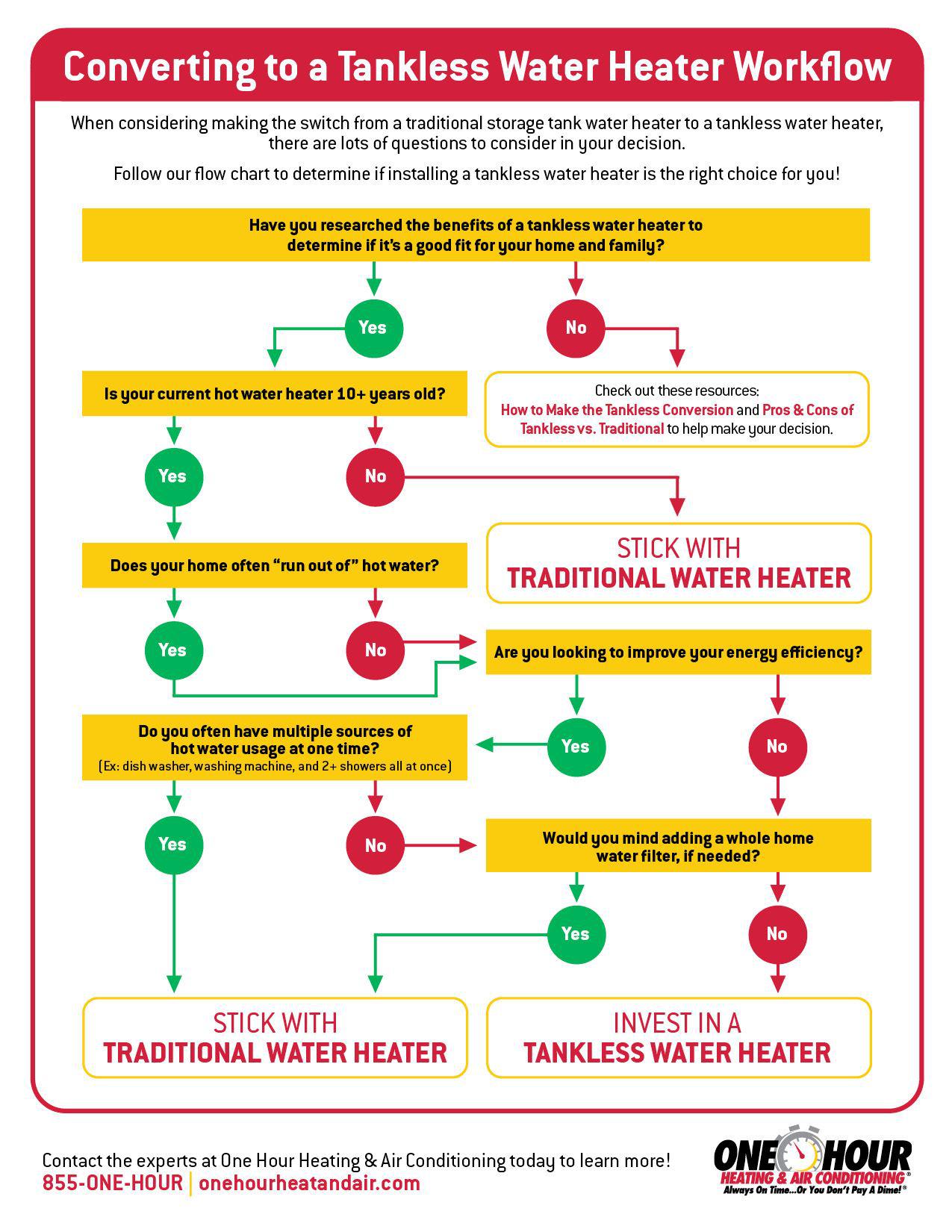How to Make the Tank to Tankless Water Heater Conversion
Tank to Tankless Water Heater Conversions: All You Need to Know
One of the hot topics in the world of HVAC has been the growing popularity of tankless water heaters. There are plenty of reasons to think about converting to a tankless water heater, especially if you’re looking to lower your energy bills and reduce your environmental impact.
Before you get started, it’s worth considering the benefits of a tankless water heater and whether it’s the right time to make the switch.
When to Convert to a Tankless Water Heater
While tankless water heaters are considerably more efficient than standard water heaters, that’s likely not a reason to make the switch right away. Most tank water heaters last between six and 15 years, while a tankless water heater can last 20 years or more.
Newer water heater tanks are also more efficient than the older models, though they still lag behind tankless options. New tank models typically have a Uniform Energy Factor of .70 compared to a standard tankless water heater, which rates .94. When the timing is right, converting to a tankless water heater is one of the top ways to lower your monthly energy bills. A One Hour Heating & Air Conditioning technician can help you decide when to make the switch.
Learn more about the pros and cons of making the switch to a tankless water heater.
Benefits of a Tankless Water Heater
In addition to being more energy-efficient, tankless water heaters also:
- Never run out of hot water
- Lower energy costs
- Take up less space
Should you Make the Switch to a Tankless Water Heater?

Converting to a Tankless Water Heater
This process could include working with gas lines, electrical components, and other potentially dangerous steps. We strongly encourage even the most knowledgeable homeowners to trust an HVAC or plumbing technician for a tank-to-tankless conversion.
Install A Bigger Gas Line
Tankless water heaters heat water on-demand. As a result, gas-powered models need more gas when they turn on, often more than what is normally required for most large furnaces. A traditional tank water heater uses roughly 30k British Thermal Units (BTUs) per hour, while a tankless model uses between 90k to 130k BTU/H.
In most cases, that means running a considerably larger gas pipe, up to a one-inch line.
Installing gas pipes and handling electrical lines should always be handled by a professional.
Remove the Tank Water Heater
This can be a time-consuming process, but you can help accelerate the process by turning off the water supply and gas line to your tank. This will allow the water inside to cool to a safer temperature to keep your HVAC technician and your family safe. Depending on the size of your tank, cooling the tank can take between three and six hours.
Installing a Tankless Water Heater
Now comes the more challenging part of the conversion. After choosing where to mount the tankless water heater, you or your One Hour Heating & Air Conditioning technician will run through the installation process. This includes:
- Mounting the tankless water heater
- Running the water heater’s vent to meet local code regulations (for gas models)
- Installing the gas line (for gas models)
- Installing new water lines
- Installing the pressure relief valve
- Connecting the electrical supply to the water heater
- Checking the system for gas or water leaks
Trust the Professionals
If it’s time to upgrade to a tankless water heater, trust the trained technicians at One Hour Heating & Air Conditioning. Make the most of your tankless water heater investment by ensuring it’s properly and safely installed. Let’s get started. Read more about our water heater services or call (800) 893-3523 today!
